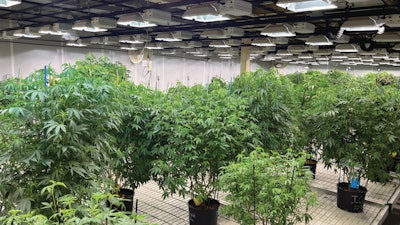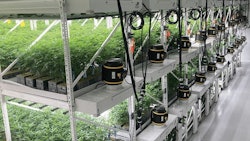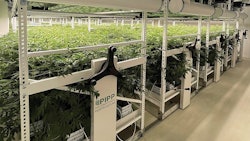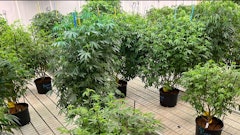
For many cannabis cultivators, the mother room is the heart of the company.
Until plants make their way through the roughly two-month grow cycle, they are cared for in mother rooms. Typically smaller areas of a grow, they are arguably the most important spaces in many operations, where genetics are maintained, preserved and strategically pruned to produce the strongest clones possible to create a new generation of crops.
Two cultivation directors of leading indoor cannabis grow facilities in Akron, Ohio, welcomed Cannabis Business Times to explore their operations and offered guidance and best practices for mother room management based on years of fine-tuning. Here, Christine DeJesus, cultivation director at Galenas, and Mike Lentz, cultivation and processing director at Klutch Cannabis, offer advice and key care tips for mother plants.
1. Minimize staff working in the mother room.
“We have some pretty tight, strict protocols in here,” says DeJesus, standing in the mother room at Galenas’ grow facility, which operates 3,000 square feet of canopy. “Try and isolate employee movement so that generally the only people working in the mother rooms are the people that are in charge of those rooms.”
Basic sanitation practices in other areas of the grow apply to the mother room as well—and DeJesus suggests ensuring employees wear gloves (and change them between plants) and keep dedicated clothes and shoes only worn at the grow.
2. Assign a pruning shear to each plant.
With about 60 mother plants, keeping individual pruning shears for each mother can be an investment, but one well worth it to Galenas to prevent outbreaks and ensure if there is a pest or pathogen that develops, that it is isolated to as few plants as possible.
3. Rotate out mother plants every three to six months.
Most mother plants at Galenas are kept for 100 days or less. At Klutch, they make sure they get new moms every four to six months.
“As plants age, they definitely become more susceptible to disease,” DeJesus says. “Every year, we go through and delete some of our library so that we can maintain the health of everything.“What happens as a plant ages is that it lignifies. So, this plant's getting a little old, and you can see the stems are starting to get more woody,” DeJesus says. “And so those types of stems don't root as well as plants that are soft and green like these. This is still nice and soft and supple and green, and it'll root faster.”
Older stems can rot before they root, she adds.
4. Keep mother plants in medium-sized pots.
Since DeJesus started at Galenas in 2019, they’ve been fine-tuning production, and one big change they made was moving mothers down to 4- to 7-gallon containers, which works well in their two-tier mother room, from 10-gallon to 20-gallon pots, in some cases. “We find that the teenager-size plants seem to give us the highest quality clones,” DeJesus says, adding that they produce ideal node spacing. “If the plants are too big and too old, then rooting takes a bit longer. If they're too small, you don't get enough clones off them. Somewhere in that mid-range is where we found the best of both worlds."
Klutch also keeps its mothers in 7-gallon containers, finding that to be the sweet spot when it comes to managing plant size and irrigation.
5. Consider hand-watering mother plants.
Although Klutch automates irrigation and fertigation in veg and flower, all mother plants are hand watered and checked daily.
“Overwatering can be a big issue, especially when you're dealing with a bunch of different plant ages,” Lentz says. “When you have so many different ages and sizes and when you lop a plant down, you have to understand it's not going to have the same irrigation strategy as it did when it had 50 pounds of biomass on it.”
At Galenas, DeJesus finds that hand watering every three days helps optimize plant growth, development and health.
“If you water more frequently and in lesser amounts, lots of times you have more issues with soilborne pests like fungus gnats. You can get root diseases, rot and things like that from just having too much moisture for too long within the soil.”

























